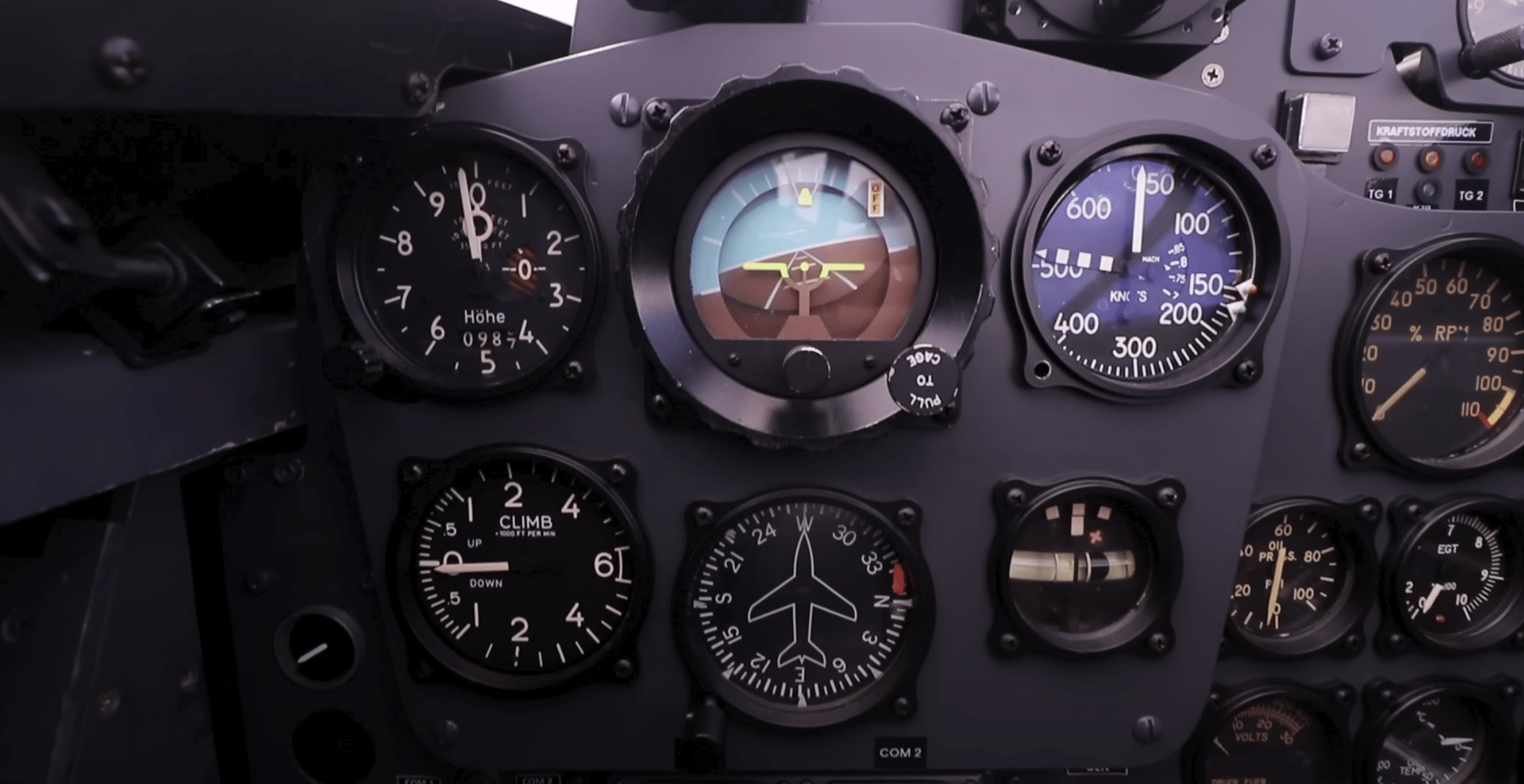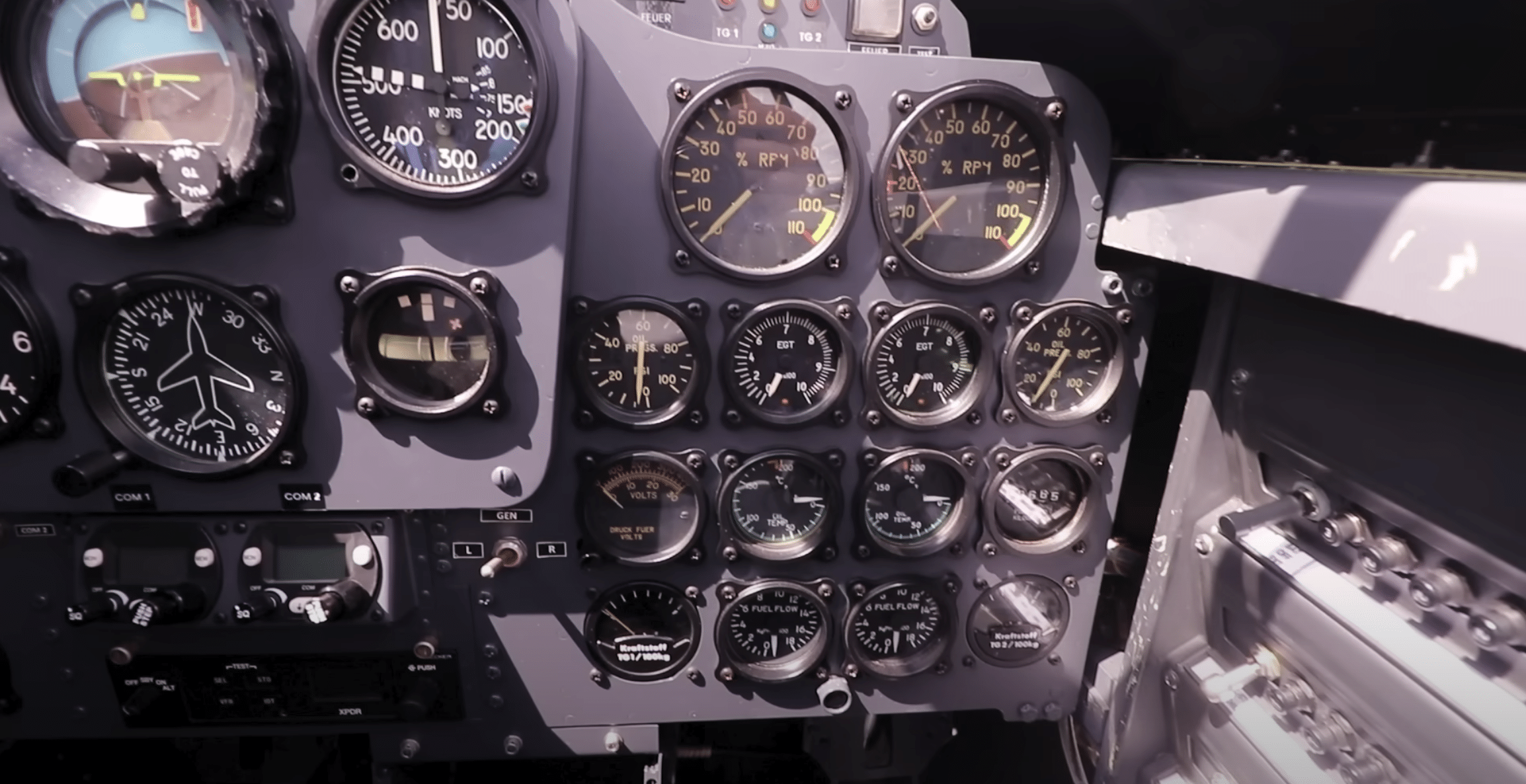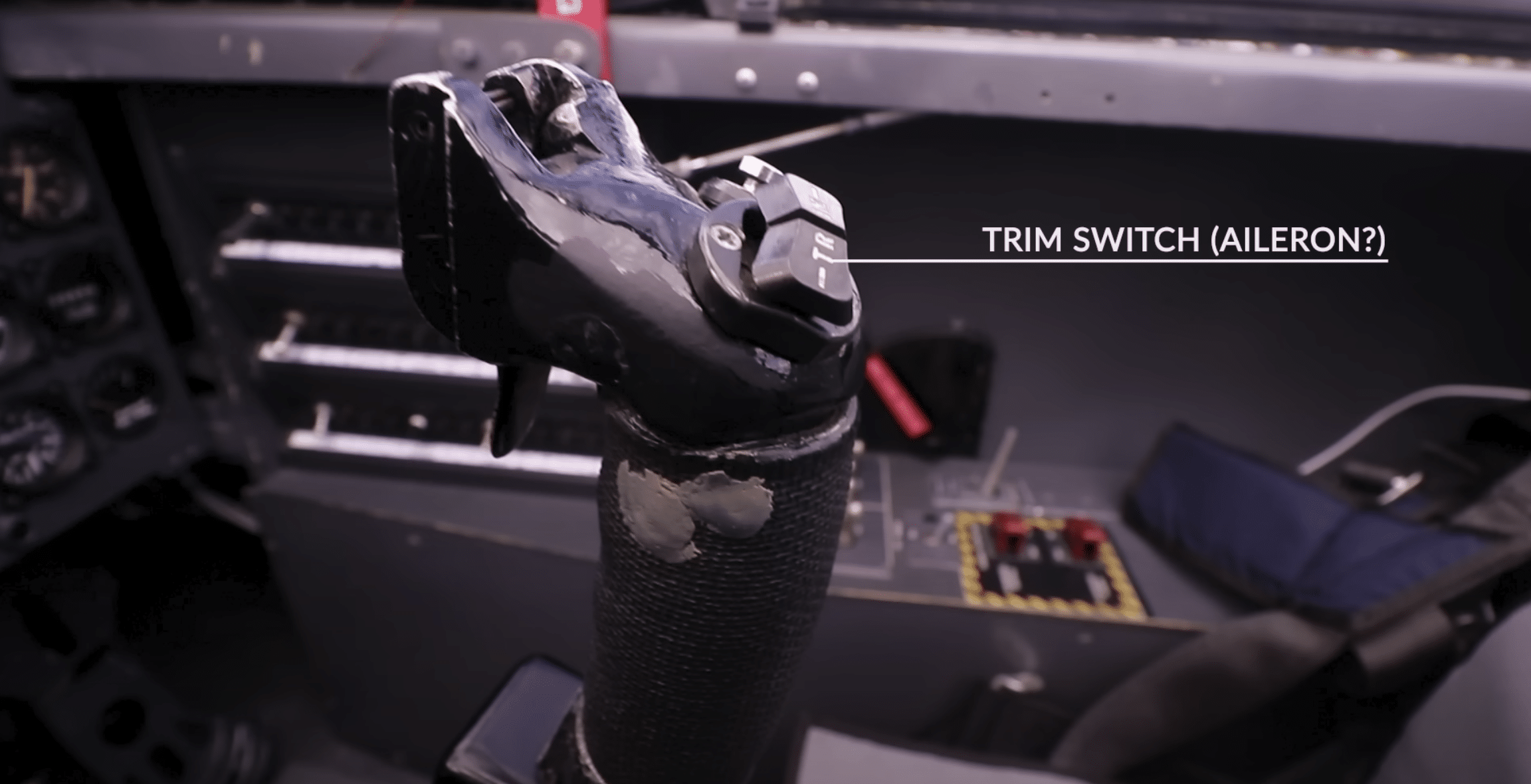
YouTube / Military Aviation History
John Chris was given a chance to jump inside the Me-262’s cockpit during the Royal International Air Tattoo event this year. Here’s what he found:

During the walkaround, Chris found the gun camera in the nose which is linked to the actual trigger inside the cockpit. The 262’s Mk. 108 guns weren’t the best for air-to-air combat, however. The rate of fire was only 650 rpm while its muzzle velocity was roughly 500 meters per second – akin to shooting a mortar while dogfighting, the shell goes out and drops down.
Since it is a flying example, the 262 had its equipment and cockpit instruments updated to modern flying regulations. Nevertheless, the 262 they have is remarkably similar to the original.

Located on the far left is the yaw trim wheel, fuel tank selector, throttle, and engine starter button. The inner red handle was for the valve manifold of the engines, while the larger handle was for the pitch trim.

Just upwards of those were the gear push buttons and flap push buttons, along with the flap position indicator and gear position indicator.

The front left panel had a substantial change from the original layout, now fitted with an Emergency Hydraulic Supply Release Switch and a compass.
At the front instrument board would have been a gunsight (which was removed) with a G-Accelerometer fitted instead. It now also has a modern communication instrument and a clock.

Below those are the Altimeter, a Gyro Artificial Horizon, and a Speedometer (in knots) in the top row. Underneath them are the Vertical Speed Indicator, a Heading Compass, and a Turn and Slip Indicator.

To the bottom left is a Temperature Gauge and where the Weapons Console would have been originally. It’s now replaced by a modern radio set.

Moving towards the right, we see the dials in its original layout. Up top are the Engine RPMs and below those are the oil pressure and engine temperature gauges.

On the third row is the ammeter, oil temperature gauges, and a fuel consumption indicator to the right.
Fuel flow and individual fuel tank indicators can be seen at the bottom row.
To the right of the pilot is a red handle responsible for the Canopy Emergency Jettison. It also has a large circuit breaker panel and the Engine Starter Panel.

The Emergency Gear Release and the connection and electric plugs for the headsets can also be found on the same panel.
The flight stick, which has also seen modifications, is missing the Gun Cocking Switch at the bottom but it does have a trigger. At the head is a new trim switch and a radio push to transmit button.
